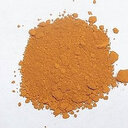Heavy metals analysis, phytochemical, phytotoxic and anthelmintic investigations of crude methanolic extract, subsequent fractions and crude saponins from Polygonum hydropiper L.
Paraules clau
Resum
BACKGROUND
Polygonum hydropiper L decoctions are traditionally used in the treatment of various ailments including inflammation, dyspepsia, diarrhea, menorrhagia, hemorrhoids, helminthiasis and CNS disorders. Present study was undertaken to investigate P. hydropiper L. for heavy metals content, phytoconstituents, Phytotoxic and anthelmintic activities to explore its toxicological and pharmacological potentials and rationalize its ethnomedicinal uses.
METHODS
Plant crude powder, methanolic extract, fractions and soil samples were analyzed for heavy metals using atomic absorption spectrophotometer. Qualitative phytochemical analysis of the plant extracts was carried out for the existence of alkaloids, flavonoids, glycosides, anthraquinones, saponins, terpenoids, sterols and tannins. Radish seeds phytotoxicity assay was used to study phytotoxic action of plant extracts. Pheretima posthuma and Ascaridia galli were used to study anthelmintic potential of the plant using albendazole and levamisole HCl as standard drugs.
RESULTS
Plant crude powder, methanolic extract (Ph.Cr), its subsequent fractions; n-hexane (Ph.Hex), chloroform (Ph.Chf), ethyl acetate (Ph.EtAc), n-Butanol (Ph.Bt), aqueous (Ph.Aq), saponins (Ph.Sp) and soil samples were found to contain copper (Cu), iron (Fe), chromium (Cr), zinc (Zn), lead (Pb), nickel (Ni), cadmium (Cd) and lead (Pb) in different concentrations. In crude powder of the plant, heavy metals concentrations were within WHO specified limits, whereas different fractions and soil samples exhibited high metals content. Ph.Cr was tested positive for the presence of alkaloids, flavonoids, saponins, tannins, triterpenoids and anthraquinone glycosides. Among different fractions Ph.EtAc, Ph.Sp, Ph.Chf and Ph.Bt were most effective causing 89.32, 89.25, 86.68 and 85.32% inhibition of seeds in phytotoxicity assay, with IC50 values of 50, 60, 35 and 100 μg/ml respectively. In anthelmintic study, Ph.Sp, Ph.Chf, Ph.EtAc and Ph.Cr were most effective against P. posthuma at 10 mg/ml concentration with an average death time of 50, 64.67, 68.67 and 71 minutes respectively. Ph.EtAc, Ph.Chf and Ph.Aq were most effective against A. galli with average death time of 7, 9 and 10 min respectively at 1 mg/ml concentration.
CONCLUSIONS
Our findings indicate that P. hydropiper contains different heavy metals and secondary metabolites. Different fractions exhibited phytotoxic and anthelmintic activites comparable to control drugs, thus provide pharmacological basis for ethnomedicinal uses of this plant.



